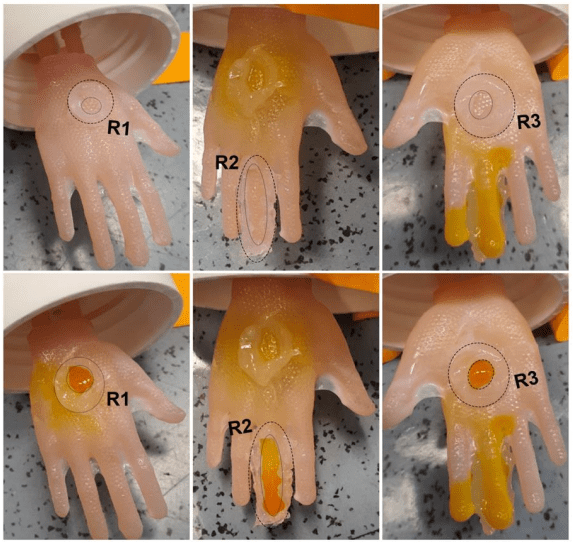A group of bioengineers may have solved the problem of grafting flat sheets of artificial skin onto awkward areas of the body by growing skin in complex, 3D shapes. Aptly termed “biological clothing”, the technique could make it possible to construct seamless 3D tissues that can be transplanted directly onto the body.
Take the human hand, so complex that even AI can’t make a decent fist (get it?) of rendering it correctly. Applying skin grafts to the hand – in the case of severe burns, for example – can be difficult and time-consuming if you only have flat sheets of artificial skin at your disposal. With this new method, it could be possible to grow a 3D glove of skin that could simply be slipped over the wounds.
“Three-dimensional skin constructs that can be transplanted as ‘biological clothing’ would have many advantages,” said lead developer Hasan Erbil Abaci, of Columbia University, in a statement. “They would dramatically minimize the need for suturing, reduce the length of surgeries, and improve aesthetic outcomes.”
It’s not only that the grafts look better and are easier to apply – the study also found that the 3D skin functions more effectively than conventional grafts made of separate flat pieces.
The process starts with a 3D laser scan of the target body part, from which a hollow model is 3D-printed. Fibroblast cells applied to the model get to work producing essential collagen proteins, needed to give the skin its structure. After 14 days, a suspension of keratinocytes – the cells that make up most of the outer layer of skin – is added, and the cells are allowed to attach and grow.

The whole process of engineering the 3D glove in this study took about three weeks, roughly the same time as it takes to make flat pieces of artificial skin. Apart from the added complexity of shaping the growing skin around the 3D model, the procedure was pretty much the same.
To test out their innovation, the team grafted some of their human skin constructs onto the hind limbs of mice. “It was like putting a pair of shorts on the mice,” said Abaci. “The entire surgery took about 10 minutes.”
When they were assessed after four weeks, the grafts had seamlessly integrated with the surrounding skin and the mice were no worse for wear, with fully functioning legs.
The mouse experiments are a great first step – but human skin heals differently, so the researchers plan to test the technology next in an animal with skin biology more closely resembling our own. It will likely be several years before we see clinical trials in humans.
Artificial skin as we know it today has been around since the 1980s, but the concept of skin grafting and the use of skin substitutes dates back all the way to the 15th century BCE. Abaci and the team realized that the advent of 3D printing could be the key to a much-needed upgrade.
“As a bioengineer, it’s always bothered me that the skin’s geometry was overlooked and grafts have been made with open boundaries, or edges. We know from bioengineering other organs that geometry is an important factor that affects function.”
In the future, it could be possible to create personalized grafts from a patient’s own skin cells. There’s also the potential for this technology to be used in face transplants, something Abaci describes as “compelling”: “our wearable skin would be integrated with underlying tissues like cartilage, muscle, and bone, offering patients a personalized alternative to cadaver transplants.”
The study is published in Science Advances.
Source Link: 3D Artificial Skin Grafts Can Be Slipped On Like Clothing For Fiddly Body Parts